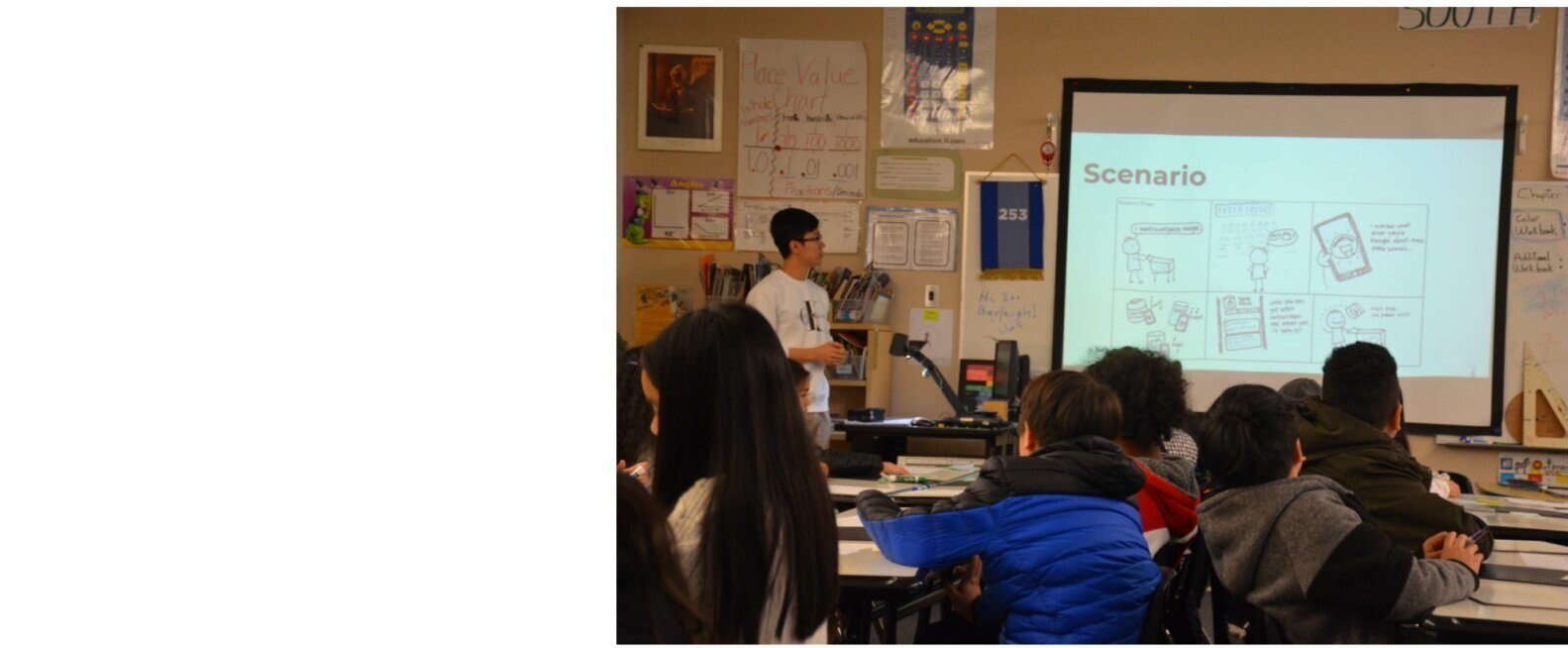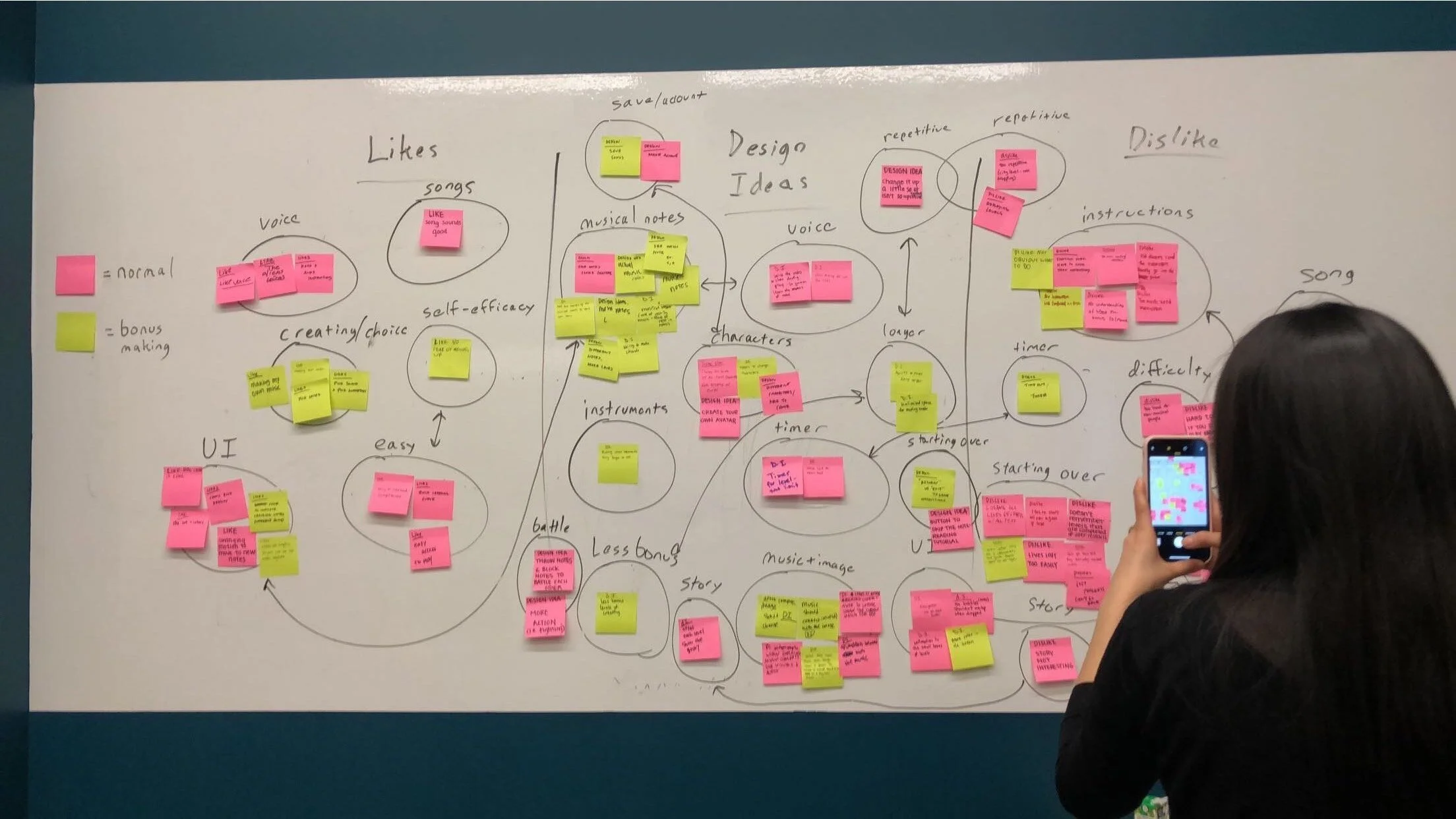
Digital Youth | Co-design with children
KIDSTEAM UW
KidsTeam UW aims to build new approaches for designing with children and families. This approach would look at how long-term projects with children will help build the next generation of technologists. It may appear to be a standard after-school program, but it is far from it. Kids between the ages between 6 and 12 participate in KidsTeam UW, shaping the way other children learn and experience technology.
I spent two years as an undergraduate researcher at the University of Washington, where I assisted in the facilitation of intergenerational co-design sessions ran by Dr. Jason Yip. I led a co-design session with an institutional design team to identify emerging technologies for children with children.
Via co-design workshops, interviews, and qualitative coding of big amounts of data, we seek to understand how children communicate with and interpret technology, which will inform our approach to developing technologies with (and for) children. KidsTeam UW collaborates with companies, non-profits, students, and faculty. We've partnered with several organizations, such as Seattle Public Library, Microsoft, Amazon, Google, SunSmart, and graduate school students from the University of Washington departments.
Sticky notes were one of the design tools used during co-design workshops, encouraging kids to write down what they liked, disliked, and ways to develop the prototype before marketing. As a member of this team, I learned the significance of incorporating children's voices in the creation of a product that benefits them.
KidsTeam UW went online as the pandemic spread across the United States in March 2020. We had to come up with new ways to plan the session and continue leading the study. To ensure that we have the children's undivided attention and efficient discussions, we reduced session time from 90 minutes to 60 minutes.
Furthermore, I was a member of a research team that is currently working on a paper about co-designing with kids. I assisted with qualitative coding, video data analysis, data writing analytical memos, and a related literature review in addition to leading facilitative co-design sessions.
Besides my work with KidsTeam UW, I have extended my experience in other research groups within the University of Washington's Information School's Digital Youth program. My involvement with KidsTeam UW left me wanting to further my understanding of the intersection of technology and education.
As a result, I joined MHCID + KidsTeam UW and the East African Community Services (EACS) research group to learn more about other factors that influence children's creative learning styles.
To learn more about KidsTeam UW, click here
Master of Human-Computer Interaction and Design + KidsTeam UW
Students in the Master of Human-Computer Interaction and Design (MHCID) at UW bring in different projects mainly, environmental-related concepts. MHCID students come from a range of disciplinary backgrounds, including UX Studies, Engineering, Programming, Design, and so on.
The prototypes examined in this study are exclusively designed by graduate school students, which sets it apart from KidsTeam UW. The length of the session and the children involved in this co-design are the same as those from KidsTeam UW.
The goal is to develop a high-fidelity digital and educational game for children. Adults and facilitators collaborate with each team by conducting observations, taking notes, and assisting children to process their thoughts. Then, the kids come up with new and imaginative ways to improve the designs. Using participatory design and a UX process approach, I worked alongside children to improve ideas.
I was part of this team from 2019 to 2020 and was a partaker in collecting data and analyzing video recordings to be applied to future research papers.
To learn more about MHCID + KidsTeam UW, click here
Online Search and Brokering in English Language Learning Families
This is one of the initiatives I am proud and honored to be a part. As a young woman of color with immigrant parents, I understand the complexities and struggles of having to translate vital papers, medical bills, and other difficult-to-understand documents. For children, navigating the internet to answer "adult questions" can be perplexing and frustrating.
In order to truly comprehend whether or not online search engines are user-friendly for young searchers, I joined the East African Community Services (EACS) research in January 2020. EACS research is a 90-minute online co-design session that takes place once a week on Mondays. The participants range in age from 13 to 17 years old.
“Why isn't it designed better? Why isn't it designed for an 11-year-old to look up important family information?”
Adults are the intended users of search engines, online resources, and technical platforms while searching for information. We want to learn how youths look for health and financial knowledge for families with lower English literacy or socioeconomic status in this report.
To learn more about some of the obstacles and step-backs children from East African communities face, we conduct online workshops for bilingual searchers to understand some of the methods and tools they use to find knowledge on the internet.
I collaborate with the youth to develop alternative technology that could change how the youth search for information online, during our 90 minutes sessions. Young children, especially those whose parents are immigrants or refugees, are expected to search the internet for essential health and financial information.
The results will impact how the next generation of designers perceives and manages everyone's exclusivity when creating technology that is intended to be used by everyone.
To learn more about the EACS analysis, click here

K-12 Outreach | User-Centered Design Workshop
K-12 CHARRETTE
In 2019, I became a member of HCDE Directed Research Group (DRG), a K-12 Outreach program at the University of Washington. Along with Senior Lecturer Andrew Davidson, I had the opportunity to conduct user-centered design workshops for elementary, middle and high school students as well as host students for workshops on the University of Washington campus.
Teach elementary school students how to approch HCD Charette activities
Final Prototype
Once they finalize their plans, students are assigned to use specific design software, such as websites, mobile apps, or other devices. Marvel was one of the software we chose for the children to use because it is simple to use and effective for collaborative design. Students use Marvel to bring their ideas to life and transform their analog sketches into digital products
Methods
Students are introduced to the fundamental aspects of the design process, design thinking, user testing, and prototyping. UCD Charrette is one of the design thinking exercises that students were introduced to. We provided a short presentation describing UCD Charrette and how to use it during class activities. Then we illustrate a few other Charrette examples.
Students then work in small groups to brainstorm user demands, sketch scenarios and create interactive prototypes for an interface in a limited time (approximately two hours).
Our workshop creates an impact on the youth because it encourages them to consider STEM field careers (particularly those from underserved communities). Furthermore, the seminar forms an environment that encourages scholars to become familiar with design principles and methods at a young age.
To learn about K-12 Outreach DRG, click here


